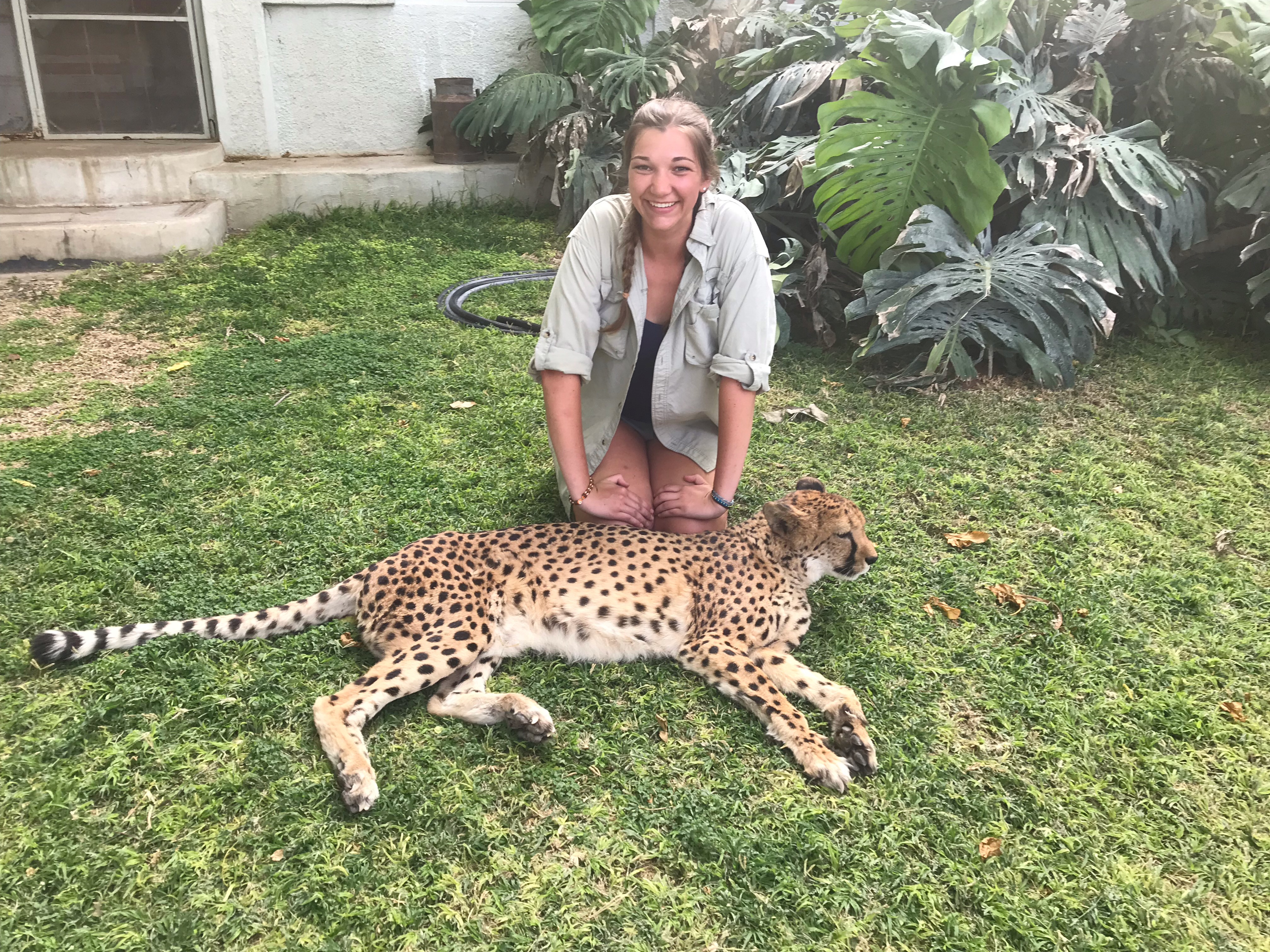
By Erika Swenson, for SNR
“How was Africa?” they say. My mind flashes back to the zebras running across the savannah and the sun setting over the plains. The lions napping under a shady tree and the Himba people performing a traditional dance. Riding an ATV up a sand dune in the desert and the winding gravel road through the mountains.
But I cannot begin to convey that all to someone in a short conversation, so I simply respond with “It was good. Really good.”
Upon arrival to Namibia for the School of Natural Resources study abroad trip, we stayed in the capital city of Windhoek for two days to adjust to the area. The city really wasn’t that different from a city you would encounter in the U.S., which I think surprised us. When people think of Africa, they don’t typically think of big cities with sprawling shopping malls or rush-hour traffic in downtown. But sure enough, those were both present in Windhoek.
The supermarkets and stores played the same pop music that we listen to here in the U.S. We visited a preschool in the city and the children sang “Twinkle Twinkle Little Star,” “Hickory Dickory Dock,” and the “Jack and Jill” rhyme. We share many of the same interests and hobbies as the people in Namibia, even though our experiences are very different. Halfway around the world, but yet these people are not that different from ourselves.
After our short time in the city, we spent the next two weeks or so traveling around the country, visiting places to learn about conservation and culture. We didn’t spend more than three nights in the same place, but even then, we usually moved locations every night. Needless to say, we became pros at setting up and taking down our tents in under five minutes.
The very first night out in the wilderness, my tentmate and I were on our way back to our tent in the dark and we heard a loud, cat-like growl very close by. Naturally, we screamed and ran to our tent. I barely slept that night, laying awake thinking about all the creatures that could be lurking right outside. It’s incredible to know that there are wild animals roaming freely, but also frightening at times.
We spent three days in Etosha National Park, and it felt like I was in a Planet Earth documentary. Giraffes galloping alongside zebras as dust illuminated the setting sun. Elephants sharing a watering hole with a thirsty leopard. Eleven rhinos tromping into the watering hole at dusk and frightening off the mischievous jackals. And that’s only the tip of the iceberg. In the moment it didn’t even feel real that I was there experiencing it, and even now, it’s still crazy to think about.
During our travels around the country, we learned about conservation practices and policies in the country, ways to mitigate human-wildlife conflict, and how to live more sustainably, even back here in the U.S. Namibia was the first country to include environmental conservation in their country’s constitution, and currently almost 40% of the land is protected. The untouched landscapes extend for hundreds of miles, changing from flat desert to rocky mountains to wide open grassland, all in a day’s drive. I believe that everyone should see that beauty at some point in their life. It makes you realize how beautiful this planet is without human interference.
At times while I was there, I would have to do a reality check. I would take a step back and think “Hold up. You’re really in Africa right now. And everything you’re seeing right in front of you is natural and real. Appreciate it.” It’s not everyday that you’re in Africa, and I wanted to make sure that I stopped to appreciate everything and didn’t take it for granted. I wish I could describe everything we did and saw while in Namibia, but it would take hours. So, for the time being, if you ask me “How was Africa?”, I will say; “It was good. Really good.”, because an experience as captivating as the Namibia trip is hard to put into words.
###
To see more of Swenson's photos from Namibia, visit our Facebook page. Find more student stories featuring our study abroad trips here.